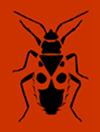Evolutionary and ecological signals in Wolbachia-beetle relationships: A review
IF 1.2
3区 农林科学
Q2 Agricultural and Biological Sciences
引用次数: 1
Abstract
Intracellular bacteria of the genus Wolbachia are the most abundant endosymbionts infecting many arthropods, with Coleoptera being the most diverse hosts in terms of taxonomy and ecology. There has been great progress in studies on the relations between Wolbachia and beetles, however, only some of the research details the consequences of infection. In this review, I summarise the knowledge on the evolutionary relations or ecological associations between Wolbachia and its beetle hosts. These bacteria often cause cytoplasmic incompatibility in the infected hosts and are responsible for a selective sweep of the mitochondrial genomes in some beetles. Wolbachia can manipulate the sex ratio or reproduction of some species of beetles, however, it does not induce parthenogenesis, with the possible rare exception of some Naupactini. Proof of the co-evolution of Wolbachia with beetles is missing, but some aquatic groups seem to be prone to co-speciation, unlike terrestrial taxa. On the other hand, there is a growing number of studies indicating or proving horizontal transmission of Wolbachia among beetle hosts, mostly via common host plants or the foraging substrate (such as dung). Wolbachia is not alone in infecting beetles as other endosymbiotic bacteria occur in beetles (Rickettsia, Spiroplasma, Cardinium, Arsenophorus), which have often been reported as interchangeable, suggesting the infection by various bacteria is dynamic. Nonetheless, there are still many issues associated with Wolbachia that are not yet been described in beetles (like the provision of nutrition or protection against pathogens) and high-throughput sequencing should be used to improve our understanding of Wolbachia-Coleoptera relations.Wolbachia甲虫亲缘关系的进化和生态信号:综述
Wolbachia属胞内细菌是最丰富的内共生细菌,感染许多节肢动物,鞘翅目是在分类和生态方面最多样化的宿主。沃尔巴克氏体与甲虫之间关系的研究已经取得了很大进展,然而,只有一些研究详细说明了感染的后果。本文综述了沃尔巴克氏体及其甲虫宿主之间的进化关系或生态关联。这些细菌经常在被感染的宿主中引起细胞质不相容性,并负责对一些甲虫的线粒体基因组进行选择性扫描。沃尔巴克氏菌可以操纵某些种类的甲虫的性别比例或繁殖,然而,它不会诱导孤雌生殖,可能有一些Naupactini的罕见例外。沃尔巴克氏体与甲虫共同进化的证据尚不清楚,但与陆地分类群不同,一些水生类群似乎倾向于共同物种形成。另一方面,越来越多的研究表明或证明了沃尔巴克氏体在甲虫宿主之间的水平传播,主要是通过常见的宿主植物或觅食基质(如粪便)。沃尔巴克氏体并不是唯一感染甲虫的细菌,因为甲虫体内也存在其他内共生细菌(立克次体、螺旋体、红弧菌、毒杆菌),这些细菌经常被报道为可互换的,这表明各种细菌的感染是动态的。尽管如此,仍有许多与沃尔巴克氏体有关的问题尚未在甲虫中被描述(如提供营养或对病原体的保护),高通量测序应用于提高我们对沃尔巴克氏体-鞘翅目关系的理解。
本文章由计算机程序翻译,如有差异,请以英文原文为准。
求助全文
约1分钟内获得全文
求助全文
来源期刊
CiteScore
2.30
自引率
7.70%
发文量
43
审稿时长
6-12 weeks
期刊介绍:
EJE publishes original articles, reviews and points of view on all aspects of entomology. There are no restrictions on geographic region or taxon (Myriapoda, Chelicerata and terrestrial Crustacea included). Comprehensive studies and comparative/experimental approaches are preferred and the following types of manuscripts will usually be declined:
- Descriptive alpha-taxonomic studies unless the paper is markedly comprehensive/revisional taxonomically or regionally, and/or significantly improves our knowledge of comparative morphology, relationships or biogeography of the higher taxon concerned;
- Other purely or predominantly descriptive or enumerative papers [such as (ultra)structural and functional details, life tables, host records, distributional records and faunistic surveys, compiled checklists, etc.] unless they are exceptionally comprehensive or concern data or taxa of particular entomological (e.g., phylogenetic) interest;
- Papers evaluating the effect of chemicals (including pesticides, plant extracts, attractants or repellents, etc.), irradiation, pathogens, or dealing with other data of predominantly agro-economic impact without general entomological relevance.

 求助内容:
求助内容: 应助结果提醒方式:
应助结果提醒方式:


